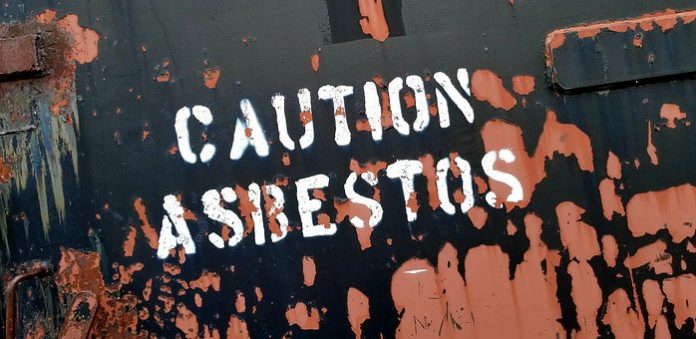We know very well that asbestos is among the most studied and harmful toxic agents in the world. Medical and scientific studies conducted as early as 1920 have demonstrated a clear link between asbestos exposure and a series of lung diseases, including lung cancer and mesothelioma. Hundreds of tons of raw asbestos are imported into the U.S. each year, with the majority of it being used in the Chlor-alkali industry for the purpose of producing chlorine, but asbestos has been found in children’s crayons, talc, automobile brakes, makeup, and other products.Ever since 1900, asbestos has been majorly used for construction and refractory materials which can still found in older homes, schools, and other buildings across the country. This leads to significant ongoing exposure and with that, the risk for developing serious diseases.
There are tens of thousands of deaths from asbestos-related illnesses in the U.S. each year and not just from working with asbestos products but also by secondary exposure.
So Why Asbestos Is Still Not Banned?
Mining has been banned in 2002 when the last U.S. asbestos mine officially closed. Despite this, it still is legal to import and use it in small amounts. With the lack of a complete ban, there are still several products that can legally contain up to 1% asbestos. Because of the fact that asbestos mining no longer happens on U.S. soil, all asbestos is now imported. The majority of countries have banned asbestos, but the U.S. although making some progress in this direction, still hasn’t fully regulated this issue. But to understand exactly why we need to first take a look at the legislative history of asbestos.
- 1970 – The Clean Air Act classified asbestos as a dangerous air waste matter and gave the EPA the ability to control the use and disposal of it. The act also stated that spray-applied products become illegal.
- 1976 – The Toxic Substances Control Act (TSCA) provided the EPA the authority to position restrictions on sure chemicals like asbestos, radon, and lead-based paint.
- 1986 – The Asbestos Hazard Emergency Response Act (AHERA) had the EPA establish standards for inspecting and removing asbestos in schools.
- 1989 – the EPA issued the Asbestos Ban and Phase-Out Rule (ABPR), which planned to impose a full ban on the production, importation, process, and sale of asbestos-containing merchandise.
- 2002 – State Senator Patty Murray, D-Wash., introduced the Ban Asbestos in America Act in 2002, which originally aimed to entirely ban asbestos within the U.S.
- 2007 – The bill (also called the Murray bill) passed the U.S. Senate, however, it died within the U.S. House of Representatives. The Murray bill would have prohibited the importation, manufacture, process, and distribution of merchandise containing asbestos within the U.S.
- 2008 – The Bruce Vento Ban Asbestos and Stop Mesothelioma Act aimed to amend TSCA to ban even more asbestos-containing products. The bill died in Congress and hasn’t been bestowed for a vote once more.
TSCA reforms were enacted in 2016 when the EPA was urged to name asbestos one of the first ten chemicals which would be evaluated under the new law. To most people, this was a necessary and natural further step to take in banning asbestos once and for all, and we were glad to see EPA do it. Despite it, the Trump EPA has disregarded some key ways that the public is exposed to asbestos, which would lead to wholly inadequate health protections. As a result, in 2017 the Federal Court got involved.
In 2019, the Federal Court agreed that the law requires EPA to consider all “conditions of use” in its evaluation of the carcinogen, including manufacture, use, storage, and disposal. Without a strong review of all asbestos uses, the public is still at high risk for potentially developing serious health consequences.
In spite of the ruling, the first part of the risk evaluation for asbestos, released by the EPA on December 30, 2020, didn’t address multiple aspects of asbestos exposure and risks, including the health impacts of “legacy” asbestos uses and disposal. They have stated the intent of conducting a second part evaluation which will focus on legacy asbestos and other uses but did not provide any specifics about how or when it would be conducted and completed.
Ignoring what has been classified as “discontinued” (yet legal) uses of asbestos, the EPA disregarded its use in insulation, plaster, and floor tiles that can be found in numerous families’ homes, schools, and workplaces across the country. We can only hope that Congress will enact legislation banning asbestos completely but still, the EPA could be working towards completing its risk management plan for several years.
What Could Change in 2021?
While we cannot predict with certainty, it’s possible that the nation’s toxic chemicals law will get a broader interpretation under President Joe Biden, which could trigger extra requirements for the industry to protect more people. Numerous industries could be required to turn over more information about how chemicals are released into the environment, the percentage of toxic agents in consumer products, and workers’ exposure.
With the rulings of the federal courts, it is expected that the Biden administration will make more vigorous efforts to examine and regulate chemicals as three courts found the Trump EPA’s interpretation of the 2016 TSCA amendments required the agency to do more work.
- In April 2019, the U.S. Court of Appeals for the District of Columbia Circuit ruled the EPA failed to make chemical manufacturers provide all the information the law mandated when they ask the agency to keep chemicals identify confidentially.
- In November 2019, the U.S. Court of Appeals for the Ninth Circuit ruled the agency couldn’t categorically exclude discontinued uses of chemicals from its risk evaluations.
- In December, the U.S. District Court for the Northern District of California told the agency it should have made a greater effort to get asbestos-use data to analyze that mineral’s risks.
It is also very probable that environmental, health, and labor groups will pressure the EPA to examine more ways in which chemicals can affect people’s health, how they can damage the environment, and to comprehensively estimate the total exposure.So when and will asbestos be banned in the U.S.? Legislation regarding comprehensive asbestos ban still remains unclear. But one thing is clear – the mountains of scientific evidence that attest to the health hazard that asbestos represents. Taking this into consideration, we cannot help but hope that in the coming years regulations will toughen to a complete ban of asbestos in the U.S.
Treven Pyles is the Administrative Director at Environmental Litigation Law P.C. , Birmingham, Alabama, United States, a law firm representing people that developed diseases like lung cancer, COPD and other debilitating diseases after being exposed to asbestos in the military or through an industrial setting.














